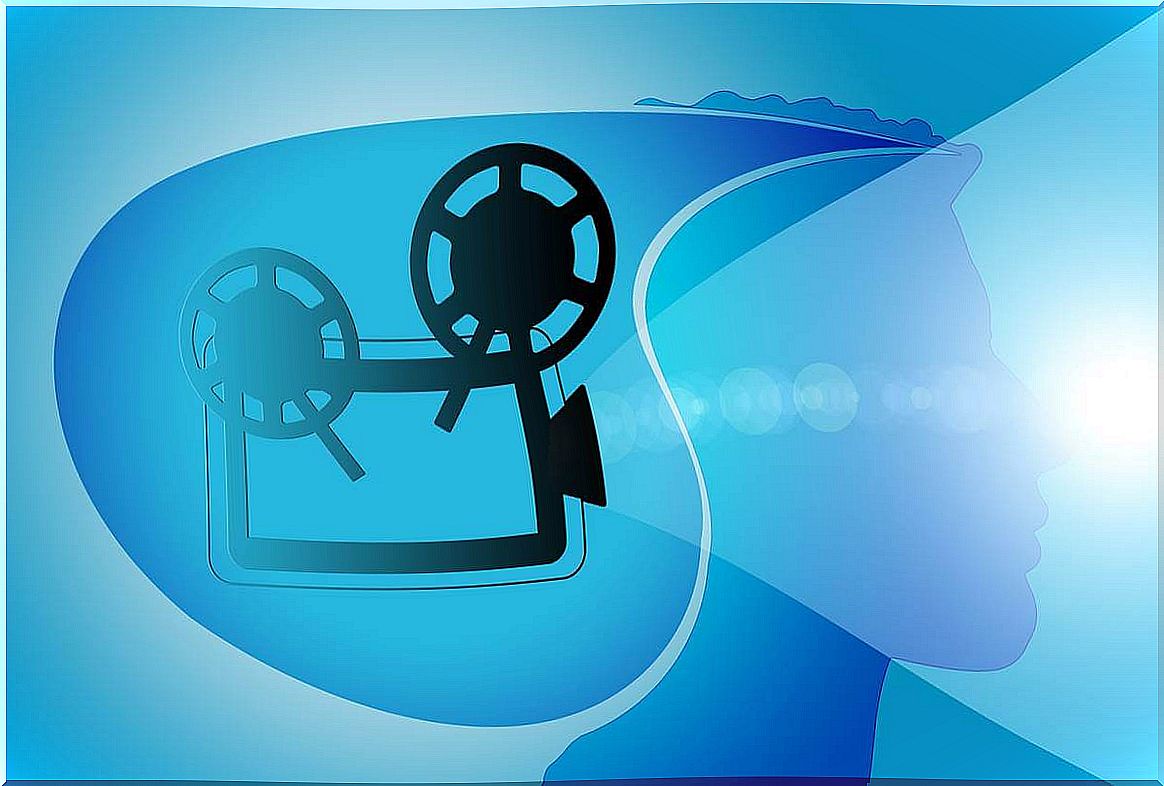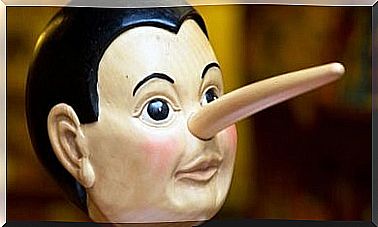Chris Argyris Ladder Of Inference: Don’t Make Movies!

We all do it on more than one occasion: we make real Oscar-worthy mental movies. Thinking about catastrophic futures, imagining certain dramas, rambling about strange stories that may be happening … All these deductions, baseless and sometimes meaningless, erect what is defined in an interesting theory: Cris Argyris’ ladder of inferences.
For those who do not know this name, we will tell you that he was an exponent of the theory of human behavior in organizations. Psychologist, economist and Harvard professor, he was a reference to help us understand the processes of connection between people, how we make decisions and how the various social settings impact us.
Now, one of the most interesting contributions of Dr. Agyris was his theory of inferences. That is, the way we give meaning to things in our mind and how they influence us towards action. Because, let’s face it, sometimes we make completely wrong interpretations that not only fuel our discomfort; In addition, they make us make wrong decisions.
Mental movies, such as imagining that our partner lies to us, that certain co-workers hate us or that we are going to fail that exam because the teacher has a mania for us, etc., have two effects on us: that we limit the quality of our life for those inferences that do not always have basis or meaning and that we fall into cycles of authentic suffering by giving value to ideas that do not start from objective facts. Let’s dive a little deeper into this concept.

Chris Argyris ladder of inferences, what does it consist of?
People suffer from a certain tendency: add two and two and give us five. We do it, for example, when we see the neighbor leaving her house crying and we think that she has just left him with her partner, when our boss is arguing with someone in the office and we tell ourselves that the company is going badly and that we will have to go looking another job.
Inferring, reaching our own conclusions and creating authentic mental films is something very ours – prototypical of the human being. In this sense, there are those who put so much effort and have so much art that they create authentic cinematographic blockbusters. If this occurs, it is for various reasons.
- The brain does not like uncertainty, it does not like “not knowing something.” To solve it, he uses a mixture of objective observations, a good dose of imagination and inferences that are not entirely logical.
- It should also be noted that the world is running faster and faster. We receive a lot of stimuli, information, we are under pressure and we have to draw quick conclusions in order to act. And therein lies one of our biggest problems.
- The other cause has to do with the mind being more and more accelerated and less reflective.
All this leads us to fall into serious misunderstandings, to make wrong attributions about people and situations. One way to become more aware and control our way of reaching certain conclusions is to know theoretical approaches, such as the ladder of inferences by Chris Argyiris. Thanks to this frame we will understand a little better how our brain works when making certain decisions.
What does the ladder of inferences tell us?
This theory was presented in the work of psychologists Chris Argyris and Peter Senge entitled The Fifth Discipline: The Art and Practice of the Learning Organization. The approach was oriented to the context of the organizations; With it, they sought to understand why incorrect or even crazy decisions are sometimes made in the workplace.
To do this, the authors used the metaphor of a ladder, which can describe the process by which people reach certain conclusions. The steps would be the following:
- We observe what surrounds us.
- We select certain data or information about what we see.
- We give them meanings.
- We build assumptions.
- We draw conclusions based on our beliefs.
- We generate a type of actions according to those final ideas.
Seeing this succession of steps, an element that mediates in this entire process: our beliefs. They are the ones that make us select one type of information and not another, they are the ones that filter our reality and those that make, sometimes, that we go from observation to conclusion in a millisecond.
How to arrive at better inferences so as not to “make movies” that look nothing like reality
We know that the brain does not tolerate uncertainty and therefore tends to reach conclusions that are too fast and also wrong. Doing it this way hurts us. We can make decisions that hurt us in the long run and we can also create conflicts with other people.
Chris Argys’ ladder of inferences allows us to take into account a series of strategies to act with greater success, objectivity and reflection. Let’s know those keys.
The 6 steps to make better decisions
The ladder of inferences theory requires some responsibility and mental effort on our part. Putting the brakes on before assuming certain ideas and broadening your gaze a little so as not to be left alone on the surface of things is undoubtedly a recommendation to take into account.
These would be the steps that we should climb to infer more accurately.
- First step: look at all the facts objectively. Do it without integrating your beliefs into them. Making assumptions is prohibited.
- Second step: do not discard any data. Sometimes we delete certain information because it does not fit our particular vision of things. Let’s maintain objectivity.
- Third step. When we see certain things we want to give them meaning. When you do, ask yourself why you give him that and not others. Be critical of yourself.
- Fourth step. Once we give something meaning to it, our assumptions come. Ask yourself, is this assumption based on the facts that I have seen or what I believe?
- Fifth step. If you have reached a certain conclusion, pass a filter on it. Remove your beliefs, your emotions from it and put it under the lens of objectivity. Do you think it is still correct?
- Sixth step: behavior. Do you act on your emotions or do you take into account the objective information that you have seen? Always act adjusting to the reality you perceive. Sometimes, if we get carried away by emotions, we can end up doing or saying something that we regret. Be thoughtful.
To conclude, it is clear that at some point we have all created a mental movie that had little relation to reality. When you notice it, discomfort (and even shame) arises.
Let’s avoid reaching these situations and make use of a more leisurely, objective mental approach free of assumptions, prejudices or nonsensical inferences.









